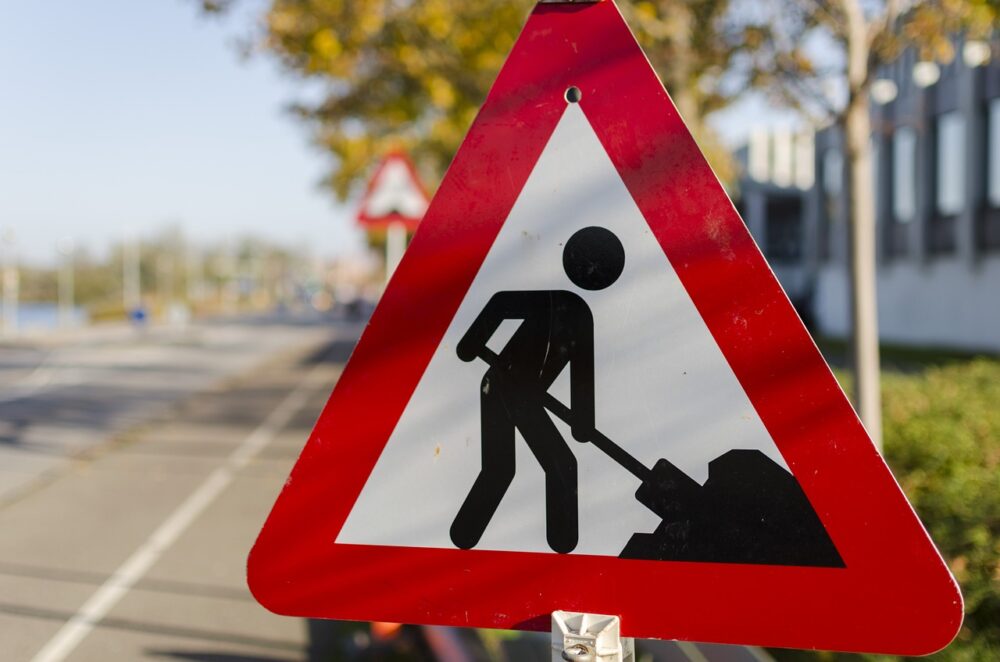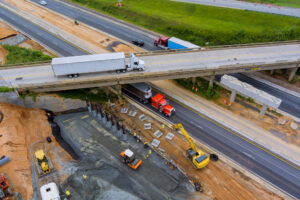Roadway Safety in Construction – Ensuring Smooth Traffic Flow

Road construction is a necessary inconvenience, one that we all face in our daily lives. Yet, while we all share the same frustration of navigating around detours or slowing down due to work zones, it is important to remember the crucial role of roadway safety in construction. With a perfect blend of planning, foresight, and meticulous execution, road construction projects can ensure smooth traffic flow while minimising accidents and disruptions.
The Significance of Roadway Safety in Construction
Roadway safety in construction is a matter of life and death. Every year, thousands of accidents happen due to construction sites not following proper safety protocols. Such occurrences can result in tragic consequences like property destruction, injuries, and even fatalities. It is thus essential that construction companies uphold strict safety protocols and that drivers are aware of and adhere to these rules.
Planning for Roadway Safety
Before the first shovel hits the ground, a detailed safety plan should already be in place. This plan should incorporate a variety of elements, from signage and barricades to designated routes and detours. All of this should be created with the single objective of keeping traffic flowing efficiently while making sure the safety of all those involved is taken into account.
Designing Detours
One of the key components in a construction safety plan is establishing alternative routes or detours. This step is crucial to redirect traffic away from the construction zone. Diverting traffic means the risk of accidents and traffic jams around the construction area can be significantly reduced.
Effective Signage
Signage is another fundamental component of roadway safety during construction. Signs are the primary way to inform drivers of changes in speed limits, road conditions, and more. The correct placement of signs is of utmost importance to provide ample warning and direction to drivers. Some of the most commonly used signs in construction zones are the 30 mph traffic signs. These signs play a vital role in controlling speed, reducing the potential for collisions and improving overall safety.
Implementing Safety Protocols
Establishing a safety plan is the first step, the next is to put these policies into effect. This involves setting up the necessary signage, erecting barricades, and marking out detour routes.
Barricades and Cones
The primary role of barricades and cones in a construction zone is to direct and control traffic flow. They act as visual guides for motorists, alerting them to changes in the roadway and directing them safely around the construction area.
Flaggers and Traffic Controllers
Human presence in the form of flaggers and traffic controllers is equally important. Their role is to be the eyes on the ground, directing traffic and making decisions based on the current situation. Their role is crucial, especially in situations where electronic signs and barricades may not suffice.
Maintaining Roadway Safety
Implementing safety protocols is just half the job; maintaining them is equally important. Roadway safety in construction is a dynamic process that requires constant attention and adjustments.
Regular Inspection
It is essential to inspect the construction site regularly to make sure that all safety measures are in place and working correctly. These inspections should check the condition of signs, barricades, and other safety equipment. Any damaged or malfunctioning equipment should be replaced immediately.
Effective Communication
Effective communication amongst all parties involved – construction crew, traffic controllers, and drivers – is vital. This ensures that everyone understands their role and responsibilities, helping to prevent confusion and errors.
Emergency Response
No matter how stringent the safety measures, emergencies can still happen. That is why it is essential to have an emergency response plan ready. This should include clear procedures for dealing with accidents, injuries, and other emergencies.
Ensuring Smooth Traffic Flow
Ensuring smooth traffic flow through construction zones is not just about the efficient movement of vehicles. It’s about maintaining the balance between progress and safety, ensuring that construction can continue without putting road users at risk.
Balancing Construction and Traffic Flow
Finding the right balance between construction progress and traffic flow is crucial. While construction work should proceed as swiftly as possible to minimise the duration of disruption, it should never be at the expense of safety. Steps should be taken to ensure work is done in a way that causes the least disruption to traffic, without compromising safety standards.
Scheduling Construction Work
One effective way to balance construction and traffic flow is through careful scheduling of construction work. If possible, work that is likely to cause major disruption should be scheduled for off-peak hours. This can reduce the effect on traffic, while enabling construction work to move forward consistently.
Use of Intelligent Transport Systems
The use of Intelligent Transport Systems (ITS) can also be instrumental in ensuring smooth traffic flow. Technology is used within these systems to keep track of and control traffic conditions, giving up-to-date data that can help with managing traffic. ITS can give road users the latest details about the state of the roads, assisting them in making educated decisions and plan their trips more efficiently.
Conclusion
Roadway safety in construction is a multi-faceted challenge that requires thoughtful planning, careful implementation, and vigilant maintenance. From designing detours and setting up signage to balancing construction progress with traffic flow, every aspect plays a crucial role in ensuring that construction zones are as safe as they can be.
The construction companies have the responsibility of setting and maintaining safety standards, but it is just as crucial for road users to comply with these measures. The cautionary 30 mph signs and detour markers are not mere annoyances; they serve as life-saving precautions that guarantee your well-being and that of the workers on site. Collaboration is key in achieving improved and safer roadways for all. Safety goes beyond taking care of oneself; it involves safeguarding every person using the roads.






